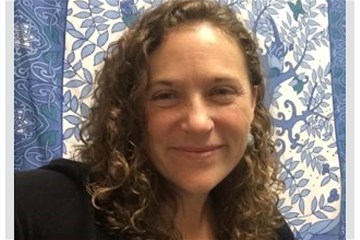One of the most important lessons I have learned at the Boston School of Theology ('17) is the responsibility we have to be accountable for the theology we practice and preach. Growing up, I knew the disciple Thomas as the one who was skeptical, the one who said he wouldn't believe the miracle of the resurrection until he had seen Christ and touched his wounds.1 I did not just learn this in church; it is a message perpetuated by popular culture and has become engrained with the name Doubting Thomas. The message is simple: do not be like Thomas, believe in the resurrection. Do not question, just believe.
Boston School of Theology is one of the 13 United Methodist seminaries supported by the Ministerial Education Fund apportionment of the United Methodist Church.
Thomas teaches us about wounds—how to ask questions and how to serve as witness to the wounds that accompany the resurrection. When Jesus appears after the crucifixion, it is not in a new body, but in a wounded body. Is there something to be learned from a wounded resurrection? Doubting Thomas helps us understand what it means to enter into the broken body of Christ. This particular passage in Acts has always captivated me because it is the Thomas moments, the moments upon entering the wound, where I encounter God. What does it mean to enter into the wounded body of Christ?
 |
When I think of the wounded body of Jesus, I think of home, the border, and the physical barrier that divides Arizona and Mexico. I think of the wilderness where so many hundreds of people have died trying to escape political violence and economic downturn. For six summers, I worked in Honduras and heard horror stories of the border, la frontera, from my Honduran friends and family. I never doubted the stories were true, but I needed to touch the wounds of the border to fully understand the responsibility I have—like Thomas, I needed to experience this wounded body of Jesus.
In spring 2010, I went on my first trip as a volunteer with a group that provides humanitarian aid on the US–Mexico border. There were six immigrants lost in the Desert. We found them but their movements were slow and weary, reflecting exhaustion known only to those who have stared death in the face. Being the translator for the group, I swung the car door open and hopped out. "We are friends of the Church, do not be afraid."
The afternoon had finally started to cool when border patrol had found us. The group had asked us to call; they wanted to go home. They were terrified and felt this was the best way to ensure their safety. I watched in horror as they piled into the back of the truck that would haul them away to one of the private prisons where God only knows what would become of them. Raul was about to get in when he turned and hugged me. Tears welled in my eyes as he said, "You have saved my life, thank you."
I could no longer hold back my tears. We watched them drive away, all crammed into that tiny space. They had wandered into the wilderness, where they had lost so much, yet all the while carrying their faith, the hope that drives humanity to seek survival despite all odds. This is their story, the story of the wounded body of Christ.
Laura Rambikur, Desert Southwest Annual Conference
One of seven apportioned giving opportunities of The United Methodist Church, the Ministerial Education Fund is at the heart of preparing people for making disciples of Jesus Christ for the transformation of the world. The 13 United Methodist seminaries help students to discover their calling through the challenging curriculum. The fund enables the church to increase financial support for recruiting and educating ordained and diaconal ministers and to equip annual conferences to meet increased demands. Please encourage your leaders and congregations to support the Ministerial Education Fund apportionment at 100 percent.





